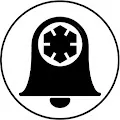0:00
Hello everyone! In today's video, we'll be discussing the Excel default template
0:04
The default template is the foundational format Excel applies when you start a new blank workbook
0:10
It defines the initial appearance of any newly created workbook. To customize this default template to align with your preferences
0:17
begin by opening a new blank workbook. You can do this by navigating to the File tab and selecting Blank Workbook from the backstage view
0:24
Once you've opened the new workbook, you can customize it extensively. For instance, you can specify the number of worksheets it should contain
0:31
and rename them to your preference instead of the default sheet one, heat two, and so forth
0:36
You can also adjust the default column widths for all columns, create tables, headings, headers, footers
0:42
and even incorporate macros or perform any other workbook customization you desire
0:49
Once you're satisfied with the customization and formatting of your workbook, follow these steps to save it as your default template
0:55
Click on the File tab and select Save As. In the Save as Type drop-down menu
1:00
choose Excel Macro-Enabled Template.xltm if you've included macros in your workbook. Otherwise, select Excel Template.xltx
1:09
Navigate to the XL Start folder as shown on the video. Name the file as Book.xltx for templates without macros
1:28
or as Book.xltm for templates with macros. Close Excel and reopen it
1:33
Press Control plus N to create a new workbook. It should now use your custom default template
1:38
It's important to note that Excel will utilize your custom default template
1:42
under specific circumstances. When you start Excel or press Control N, as well as when you click the New button on the Quick Access toolbar
1:49
Excel will apply your customized default template. However, if you navigate to the File tab and choose Blank Workbook
1:55
to create a new workbook from there, Excel will not use your custom default template in that instance
2:00
This behavior ensures flexibility depending on how you initiate the creation of a new workbook within Excel
2:07
Note. If the default template does not load at Excel startup, try disabling the Start screen in the Excel options
2:13
Thank you for watching. If you found this video helpful, please consider liking, sharing
2:18
and subscribing for more content like this in the future. Your support means a lot


